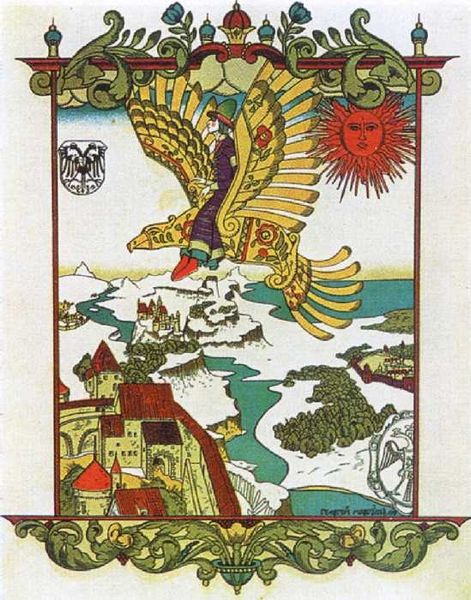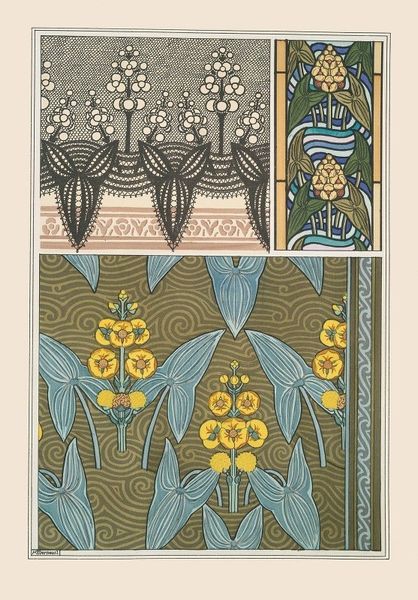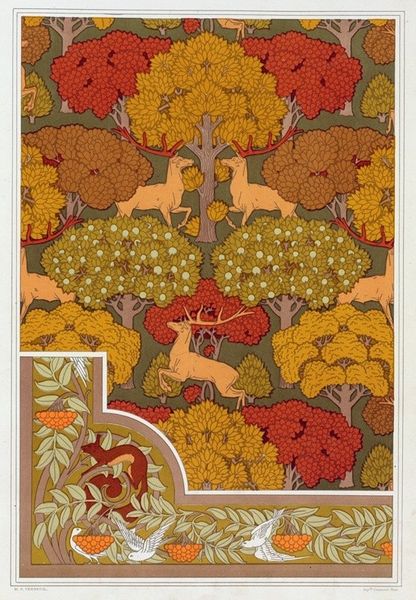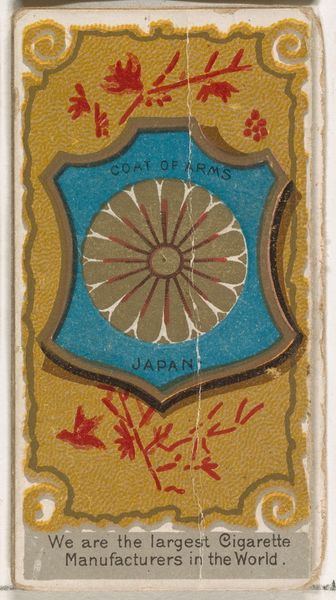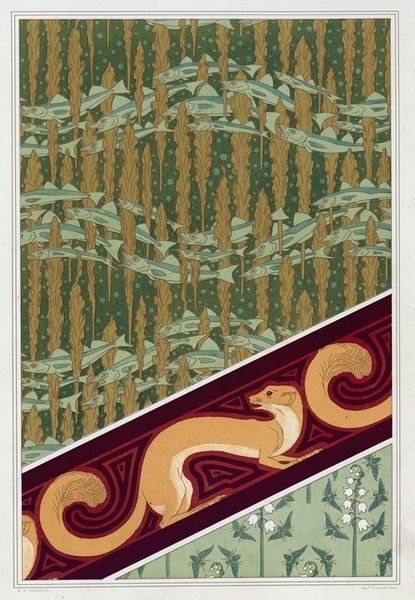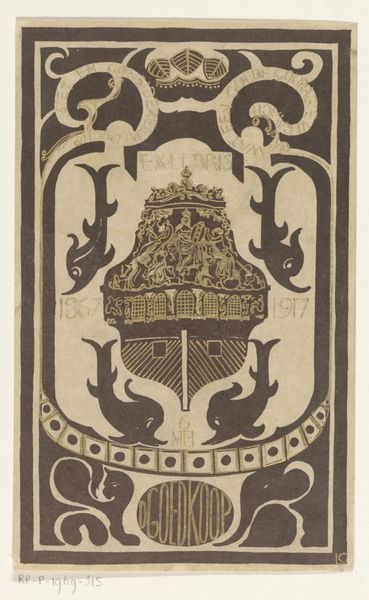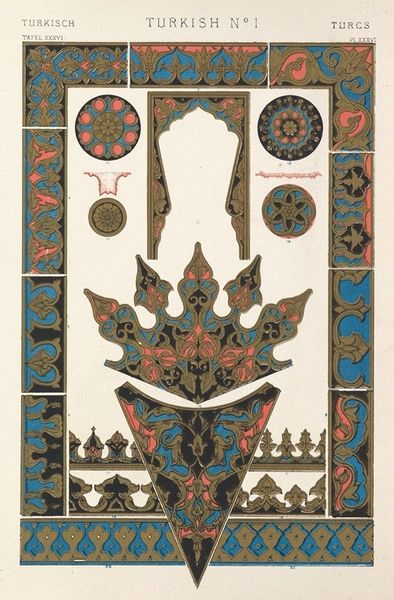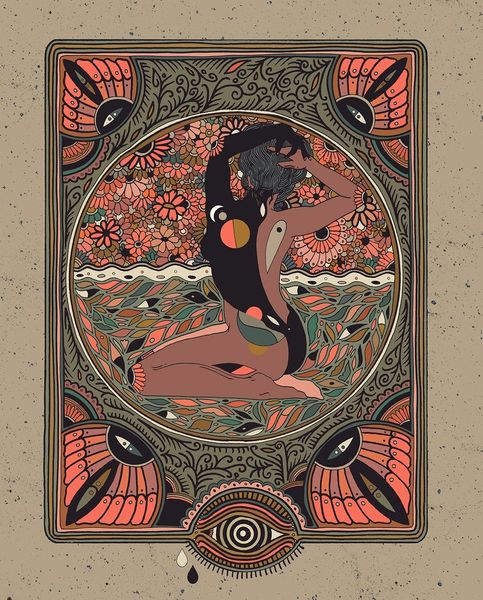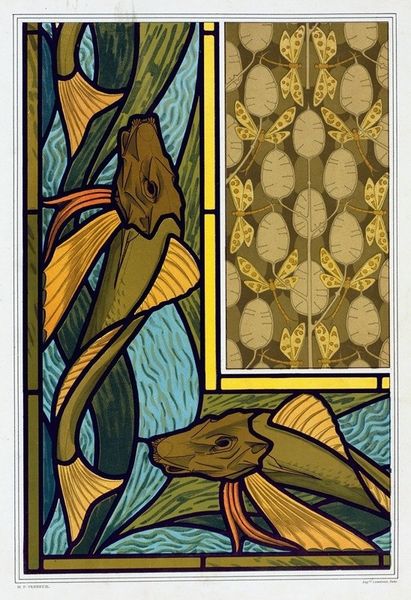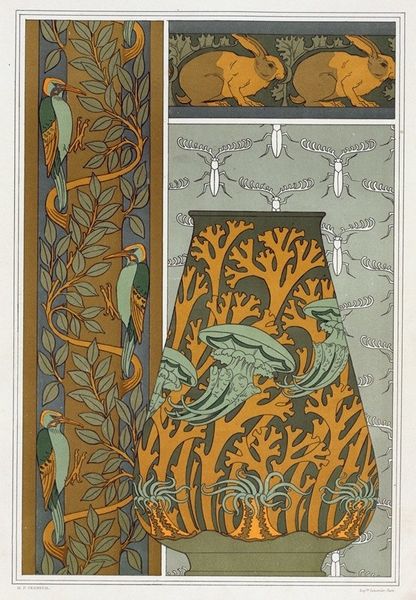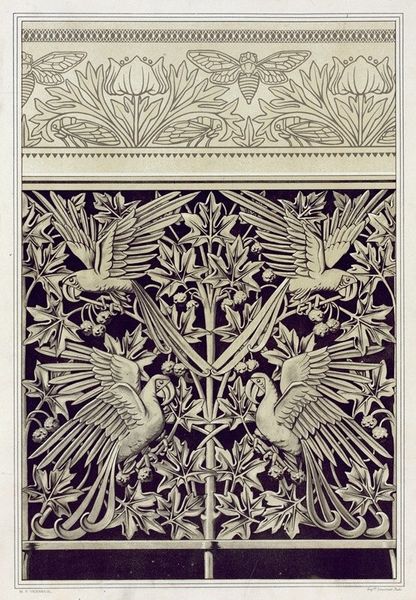
Copyright: Public Domain: Artvee
Editor: So this is "Coraux, madrepores, étoiles de mer et algues, cretonne imprimée." by Maurice Pillard Verneuil, created in 1897. It seems to be some sort of printed textile design. It's a bit chaotic, but in a way that feels carefully planned out. The composition is very intriguing, the color is pleasant... How do you interpret this work? Curator: A very keen initial observation. Immediately striking is the clear hierarchical structure created by the tripartite division of the image field. What do you make of the contrasting motifs occupying those divisions? Note the visual tension between the rigid geometry of the central medallion and the fluid, organic patterns above and below. Editor: Well, it seems like there are two worlds colliding—the marine world up top with corals and sea stars, and the earthly one down below with ducks and irises. The medallion feels like an attempt to tie these realms together with ornate decoration and framing elements. But the differing visual languages—the marine environment with curvilinear naturalism against ducks with rigid repetition—create, as you point out, tension. What is its meaning, though? Curator: Indeed. Meaning is perhaps too unstable a term. Let's stick to structure for a bit longer. Note the recurrence of circular forms—the central medallion, the starfish, the swirls of water. These formal echoes create a sense of visual unity, regardless of theme. Consider, too, the tension arising from flatness itself - the coral, sea life and flora rendered so that a three-dimensional effect vanishes. It begs the question: What inherent value did a flattening offer Verneuil? Editor: So you are suggesting that the relationships and composition choices create their own story. Very insightful to strip it all down. Now that you mention all of that, I will be sure to focus on the patterns themselves more carefully. Curator: Exactly. Deconstructing the structural elements opens avenues for endless, novel encounters.
Comments
No comments
Be the first to comment and join the conversation on the ultimate creative platform.
